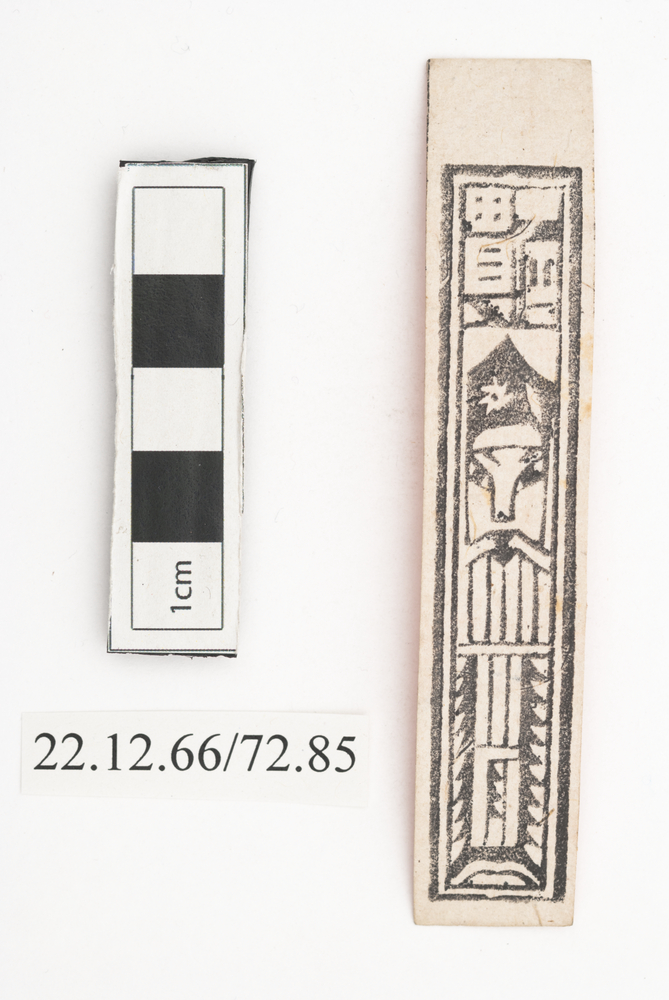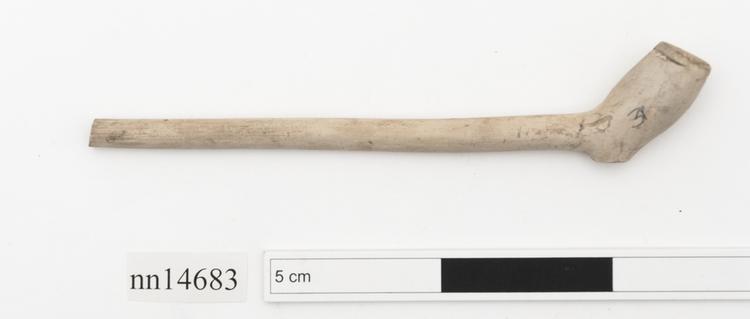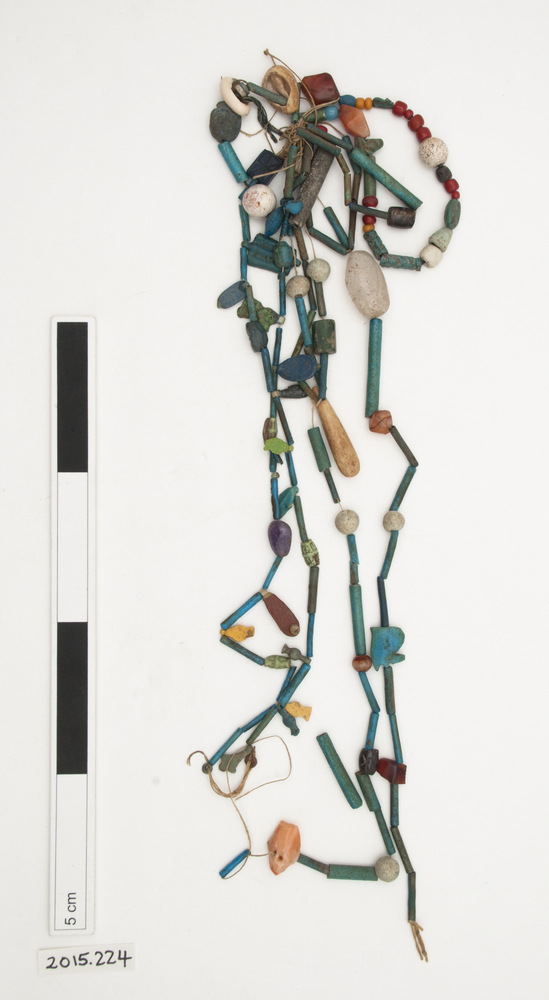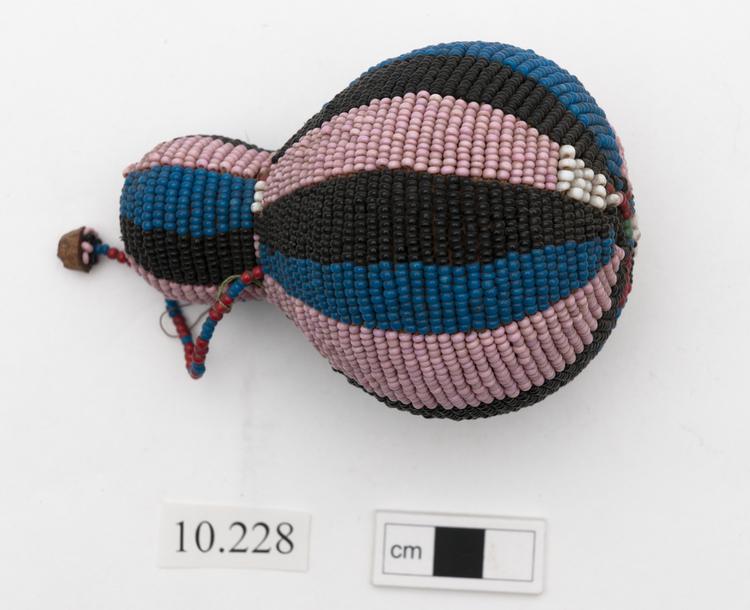Part of a carved wooden archway, made from teak wood. There is a label with this part, marked 'Front 2'. This forms the horizontal section on the front side of the arch, between the top panel (part 12) and the posts and small panels beneath.
A long beam, roughly rectangular in cross and with a section of wood cut away at one end, forming a two pronged 'fork'. One of the narrower faces is intricately carved in the centre section at either side of this are two shallow slots. The one on the left is marked 'LXX' (part 26 may slot into this) the right ' LXXV'(Part 27 may slot into this) .
The opposite face is carved throughout and has two shallow trapezoid shaped slots, the same distance apart as on the opposite face. The bottom face has 3 square holes which pass through to the other side.The left is marked 'XXXVI' (part 1 slots into this) the next is marked 'XXXVII' (part 2 slots into this) and the third is marked 'XXXVIII' (part 3 slots into this). Beneath the 'prong' on the right hand side 'XXX' is marked (Part 4 fits between the prongs). Between each of the square holes is a narrow trench into which the panels beneath slot. These are marked, from the left ''XL', (Part 6 slots into this) 'XLI', (Part 7 slots into this) 'XLIII', (Part 9 slots into this) and 'XLIV' (Part 11 slots into this). This face has 2 stickers in the central section. The left is marked 'LX3' and the right 'LX2'.
The top face has small rectangular slots between the square holes. The left of these is marked 'XXXII', followed by 'XXXIII', 'XXXIV' and 'XXV'. (These all correspond to joints protruding from part 12). There is a sticker in the middle of this face which is marked ‘Top Structure A’.
archway
Collection Information
These objects are only a part of our collections, of which there are more than 350,000 objects. This information comes from our collections database. Some of this is incomplete and there may be errors. This part of the website is also still under construction, so there may be some fields repeated or incorrectly formatted information.
The database retains language taken from historical documents to help research. Please note that some records may feature language and reflect systems of thinking that are outdated and offensive. The database also includes information on objects that are considered secret or sacred by some communities.
If you have any further information about objects in our collections, can suggest corrections to our information or if you see content requiring immediate action, please contact us: enquiry@horniman.ac.uk






